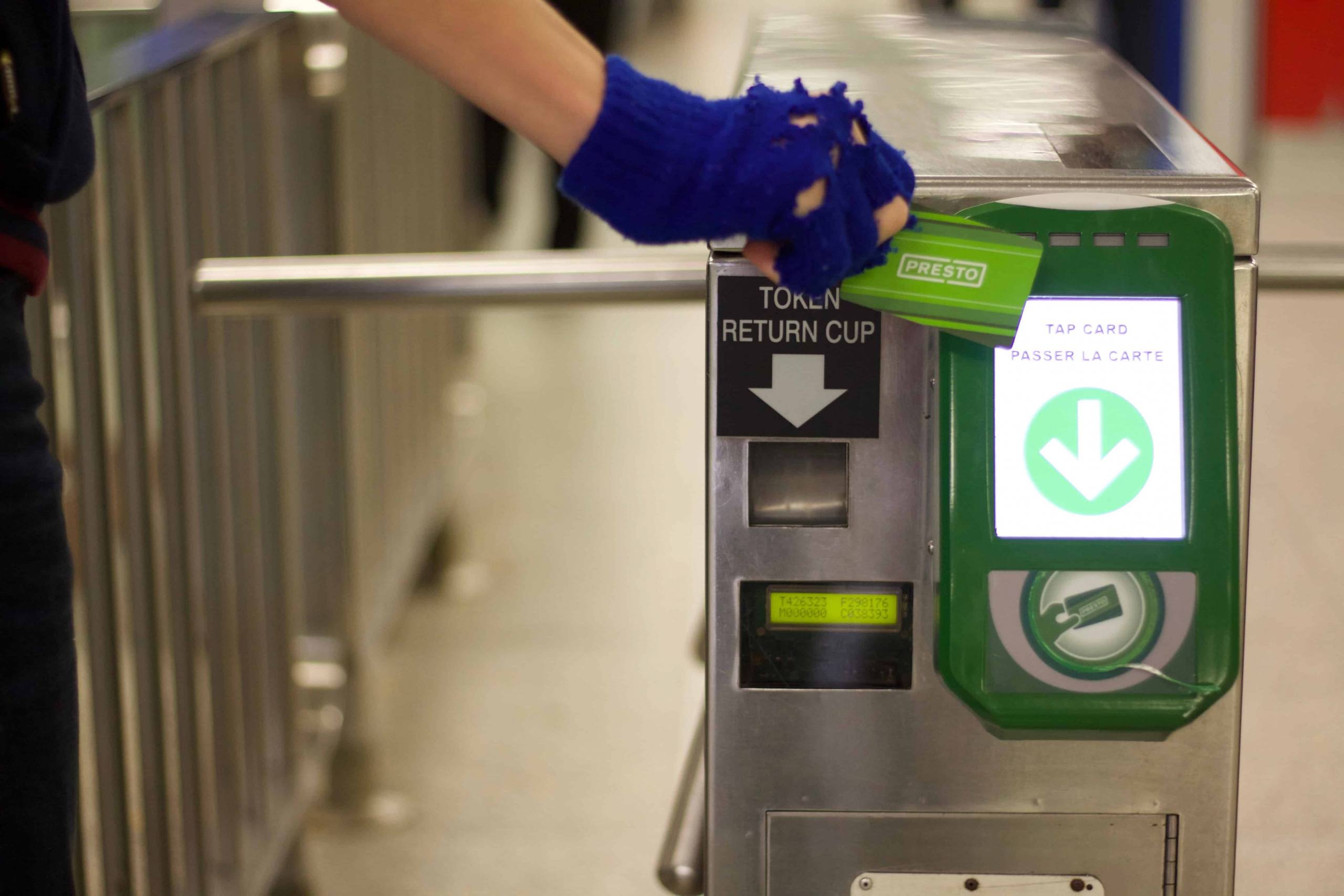On the far-east end of the Toronto Transit Commission’s (TTC) Bloor-Danforth line lies Warden Station, a typical Toronto transit terminal complete with retro 1960s tiles, turnstiles, and collector booths. Recently, however, the station’s turnstiles have been levelled to make way for new PRESTO-fare terminals, a feature now present in over half of the city’s subway stops.
Following an announcement last year from the TTC that indicated the corporation was looking to phase out tokens, tickets, and metropasses by mid-2017, the city began an aggressive and costly campaign to prepare Toronto’s aging transit network for the electronic payment system.
Yet, while Metrolinx — a government agency overseeing transportation in the Greater Toronto Area — may insist that PRESTO allows transit users to “tap into an easier commute,” the realities of the new fare system continue to reflect a civic philosophy focused on megacity-building, as opposed to the needs of students and the city’s most vulnerable.
With the implementation of a city-wide electronic fare system, the TTC will be joining the ranks of the New York City Transit Authority and the San Francisco Municipal Transit Agency, both of which use similar payment systems. The decision to join these world-class cities is a costly one. According to a 2012 Auditor General report, the price of expanding the electronic fare system on the city’s public transit fleet will cost over $700 million.
If these funds had been allocated differently, they would have covered almost half of the $1.48 billion originally estimated for a seven-stop Light Rail Transit expansion in Scarborough. Urban scholars agree that increased access to transit would greatly alleviate poverty in the city’s east end, while easing the commute of students to the downtown core.
The funds could also be used toward operating the fleet; 75 per cent of these costs are currently covered by user fares — the highest proportion, on average, in North America.
While the costly expansion of PRESTO throughout the TTC fits with the commission’s pattern of skewed priorities, the effects of the end of monthly metropasses, tickets, and tokens will perhaps be felt greatest by students and Toronto’s most marginalized residents. The monthly post-secondary metropasses that are a staple in so many students’ wallets will soon be replaced with green PRESTO cards.
It is not yet clear if the transit commission will continue to offer a reduced monthly rate to students, as they previously did for monthly passes.
Finally, it is clear that the needs of residents living closest to the poverty line are not being prioritized. PRESTO passes require a $6.00 issuing fee to acquire the pass and a minimum balance of $10.00 to load it — this makes it more difficult for those attempting to navigate the city on slim budgets and more expensive for community service centres who grant users transit allowances.
The TTC does have plans to implement limited-use paper PRESTO cards once tokens and tickets are no longer available, which could mitigate some of the negative effects of taking away those payment types. In order for this to be a benefit, the paper cards will need to be widely available and offered at the same rates as tokens were.
Although PRESTO cards can be reloaded with cash, they are primarily designed to be reloaded online using a credit or debit card, which is problematic given that access to the Internet and paying via plastic are two luxuries that numerous Torontonians do not have.
As Toronto continues to make commutes easier for the city’s middle class with new transit lines like the Union-Pearson Express, PRESTO will also continue to serve this same demographic, while disregarding the needs of Toronto’s population of urban poor residents.
Although changes to the system are already well underway, a potential solution to these concerns lies in continuing grassroots activism. Groups like the TTCriders, for instance, aim to advocate on behalf of transit-takers in the city and ensure that their voices are represented.
Using similar methods, Torontonians can ensure our public transit commission’s priorities align with a new urban agenda — this time focused on social justice and equality.
James Chapman is a second-year student at Innis College studying Political Science and Urban Studies.


